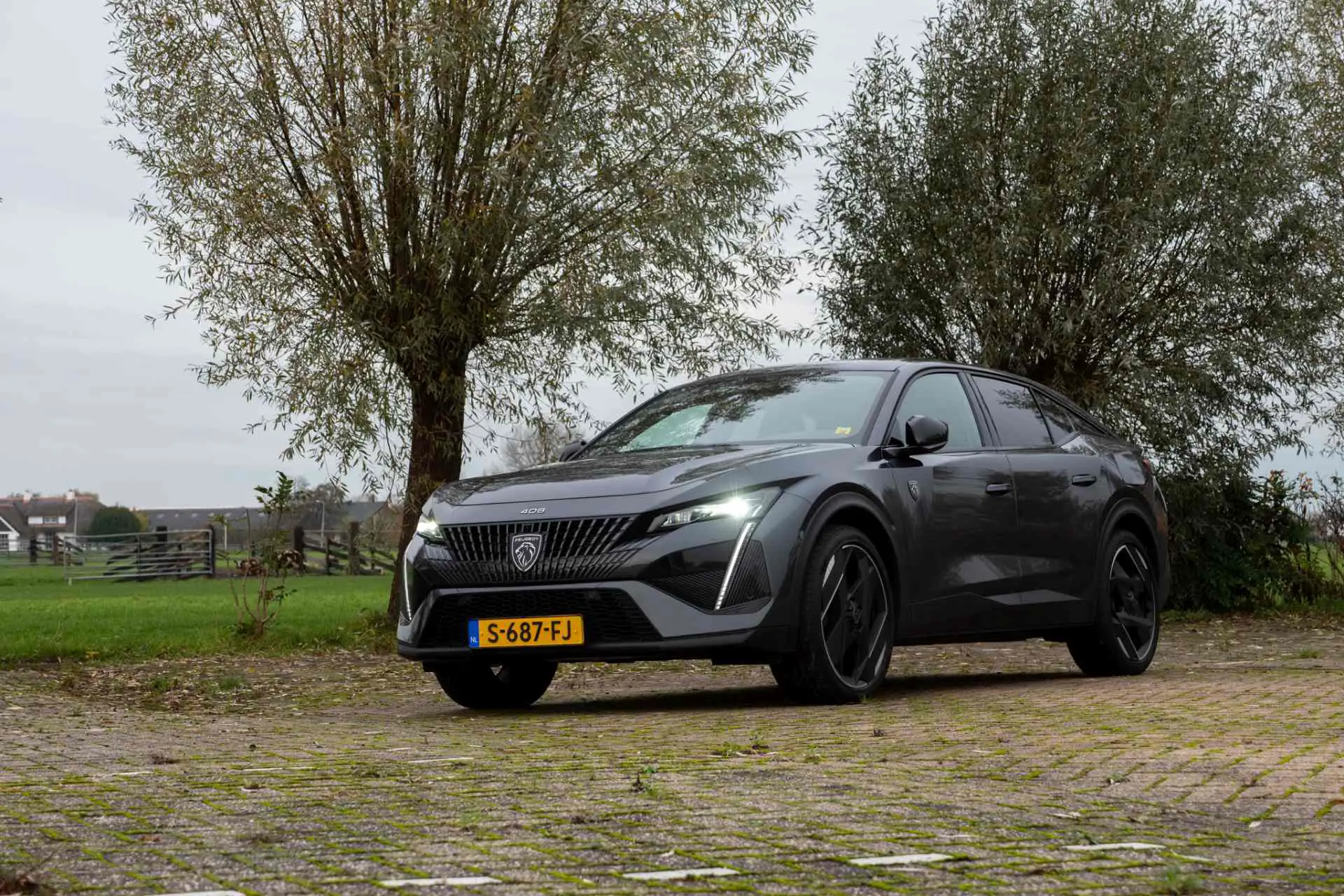Review – Peugeot 408 PHEV (2024) – Dynamic Frenchman
Peugeot 408
So the French call the 408 a dynamic fastback, but we prefer to describe it as a liftback that stands a little higher on its wheels. The 408 has a distinctive look. Under the surface, the car shares its genes with the 308 and 308 SW, but even on the outside we recognize typical 308 features, such as the tusk-shaped daytime running lights and claw-like LED taillights. It is overwhelmingly a car for people who want something different in their driveway than the rest of the street.
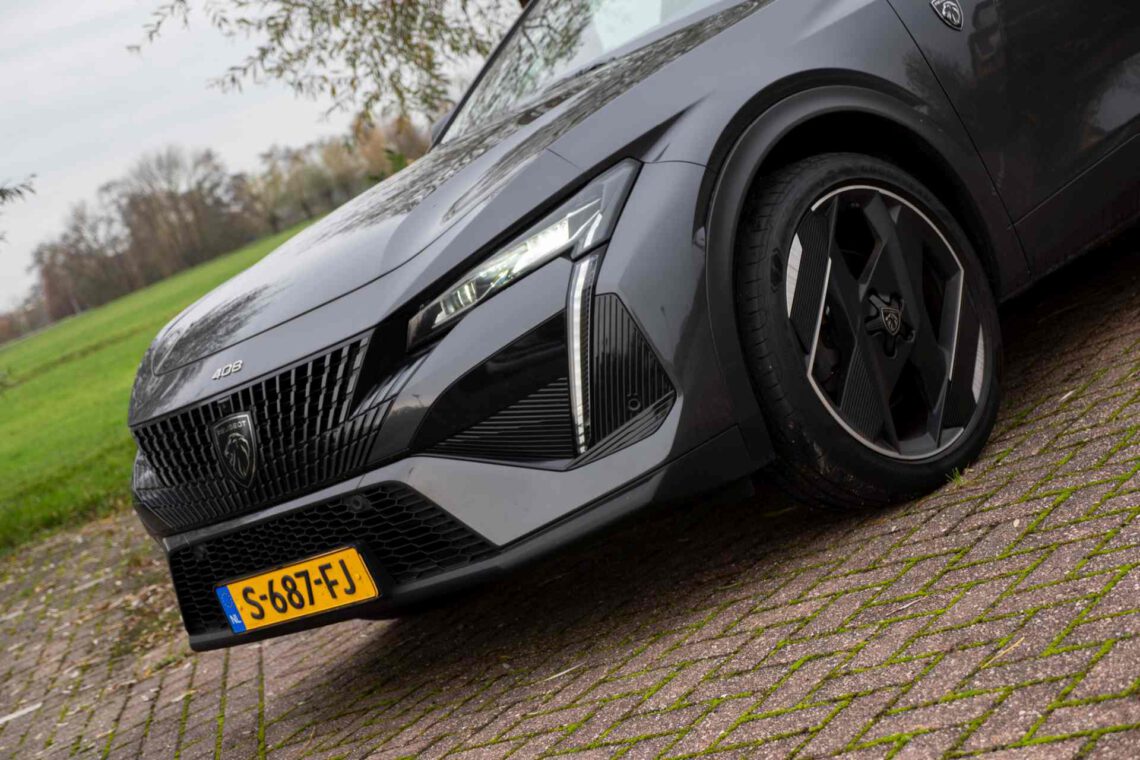
i-Cockpit
The interior is taken directly from the 308, but that doesn’t make it any less quirky. The latest generation of the i-Cockpit is present, recognizable by the compact sports steering wheel with the digital instrument cluster above it. So to read that, you have to look over the steering wheel. We have no problems with this, but if you are on the shorter or taller side, this can be a challenge. At worst, you stare at the steering edge and have no idea exactly how fast you are driving. So, if the 408 is on your radar, we encourage you to take a test seat at your local Peugeot dealer.

Pesonalizing
The i-Cockpit is equipped with so-called i-Toggles. These are digital buttons that you can control on an additional screen under the infotainment system. You can choose which buttons appear here. For example, you can put your favorite radio station here as a shortcut or a button for the seat heater. A very convenient system, allowing you to personalize the infotainment system considerably. Speaking of seats, they are truly superb in the GT version we drive.
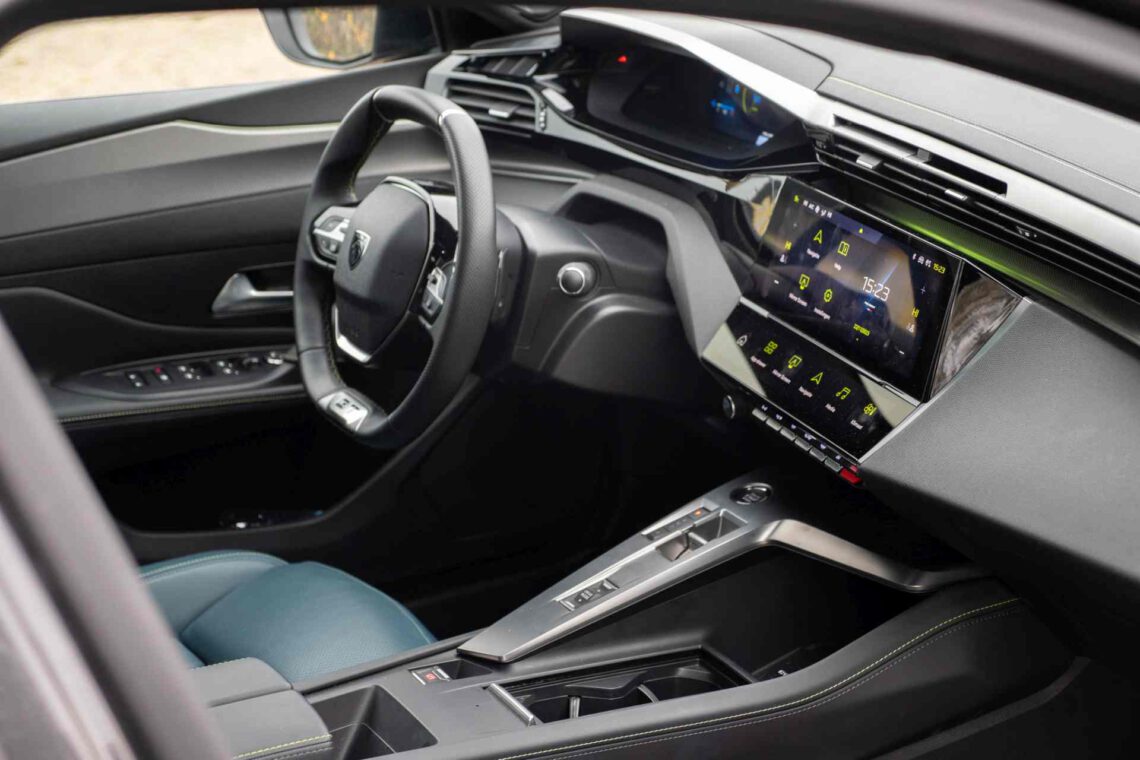
Little legroom
Despite a wheelbase of nearly 2.79 meters, rear legroom is a bit disappointing. There is more than enough room for children, but as adults you would rather not spend a long vacation trip sitting in the back. Although headroom is remarkably generous. The luggage space is also substantial, with a capacity of 536 liters that can be expanded to 1,611 liters when you fold down the rear seatback.

Plug-in hybrid
The 408’s powertrains were copied one-to-one from the 308. The engine palette includes a 130-hp gasoline engine and two plug-in hybrids with outputs of 180 and 225 hp, respectively. We drive the plug-in hybrid with 180 hp. The powertrain consists of a 150-hp PureTech engine and a 110-hp electric motor. Like all engine variants, shifting with the PHEV is via an eight-speed automatic transmission.
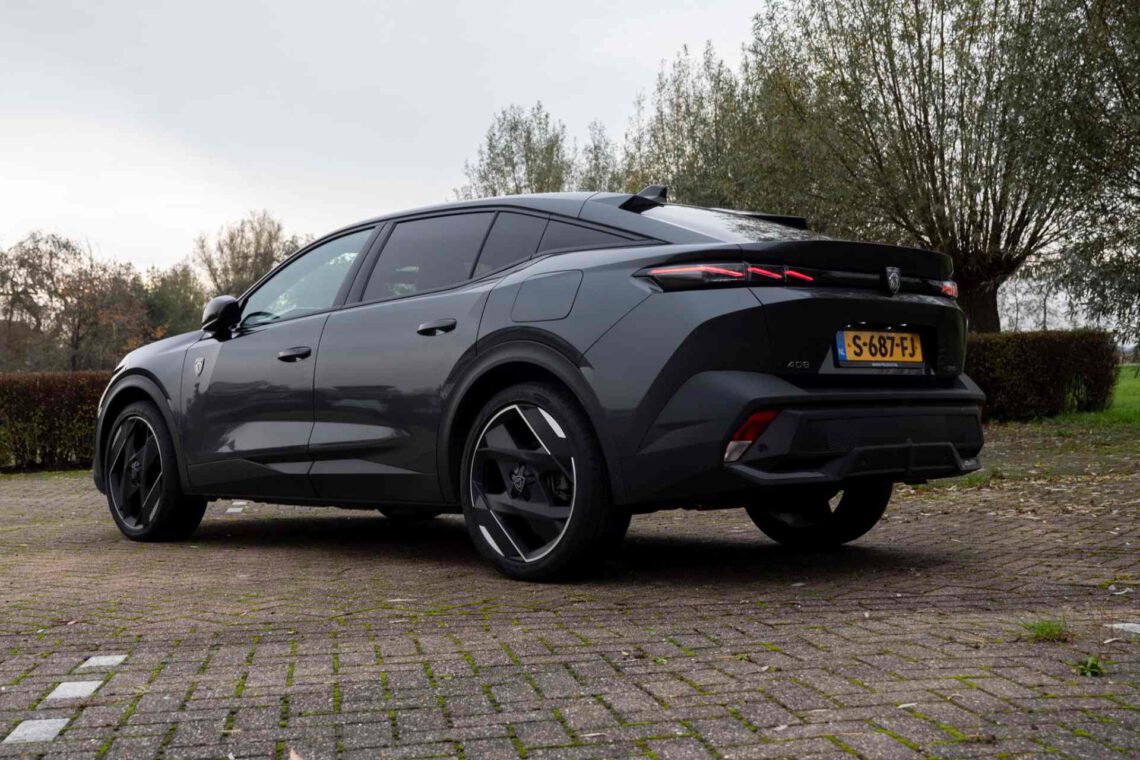
Smooth boy
Thanks to the electric motor, the car shoots off smoothly. The gasoline engine instantly gears up when you press the accelerator pedal deeper. The two engines work together nicely. Power is never in short supply. It is a piece of cake to quickly overtake or speed up for the highway. There, the electric motor can also handle all the work alone, as long as you don’t drive faster than 135 mph.
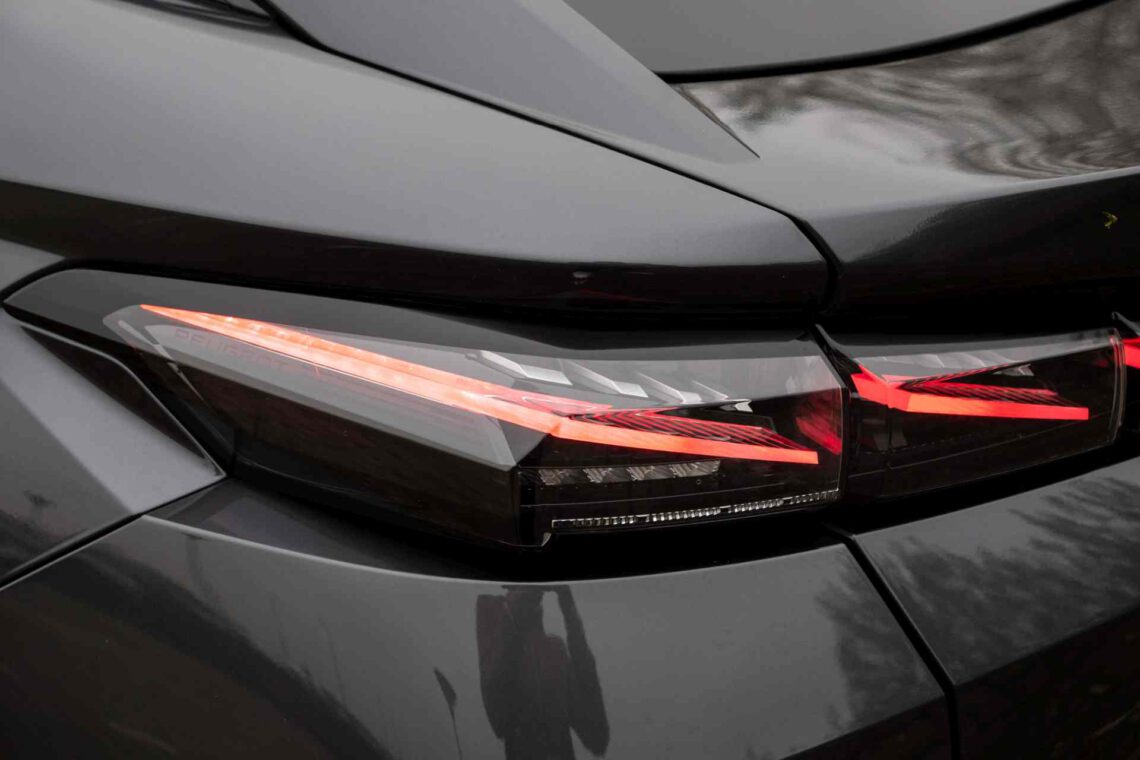
60 kilometers
According to Peugeot, there is enough power for 60 all-electric miles. Such figures should always be taken with a grain of salt. In practice, we don’t get further than 45 kilometers on electricity. That will mainly have to do with the giant 20-inch Monolithe wheels on which the test car rolled. They look tremendously tough and robust – we think so – but do snatch some precious mileage.
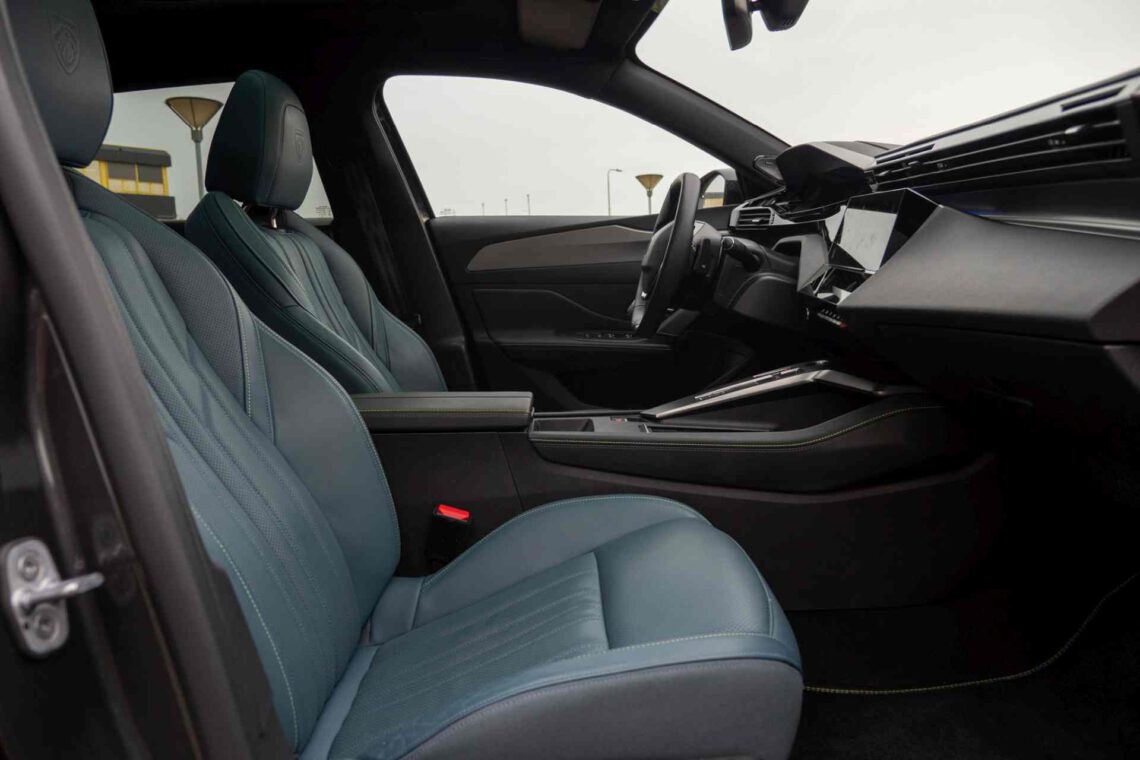
Daily rides
Still, we were able to sustainably complete almost all of our daily drives during our week of testing. There, of course, lies the strength of a PHEV: driving electric almost all year round and only on longer distances does the internal combustion engine kick in. By default, the car can handle up to 3.7 kW of charging power, but an upgrade to 7.4 kW is possible. Always do, as this provides many extra green miles even on a relatively short charge.
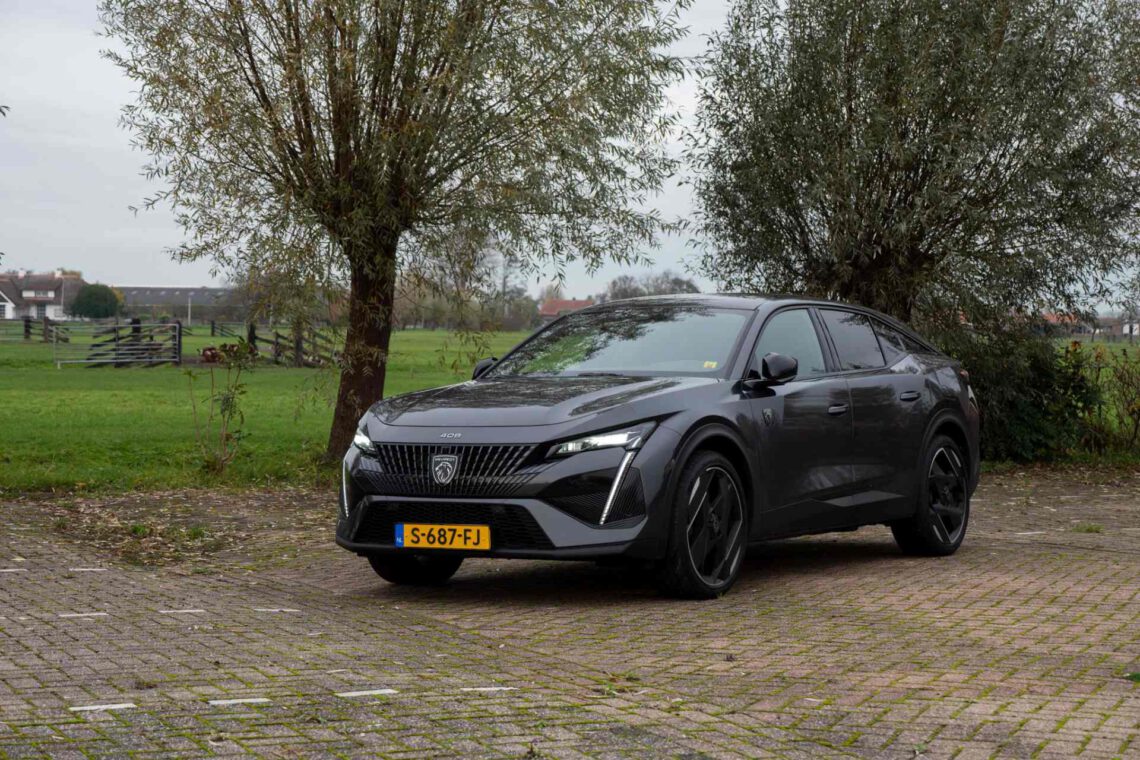
408 GT
As mentioned, we drive the lavishly dressed GT version: two letters that really fit the car. It is not an overly powerful and fast car, but it is quite smooth and comfortable. In short: a true grand tourer. A car that is more than capable of being a mile-eater, even when the battery is dead and the gasoline engine has to go to work. Personally, we would choose a slightly smaller wheel size, for just that little bit of extra comfort, but even with the 20-inch wheels beneath us, we have little to complain in that regard.
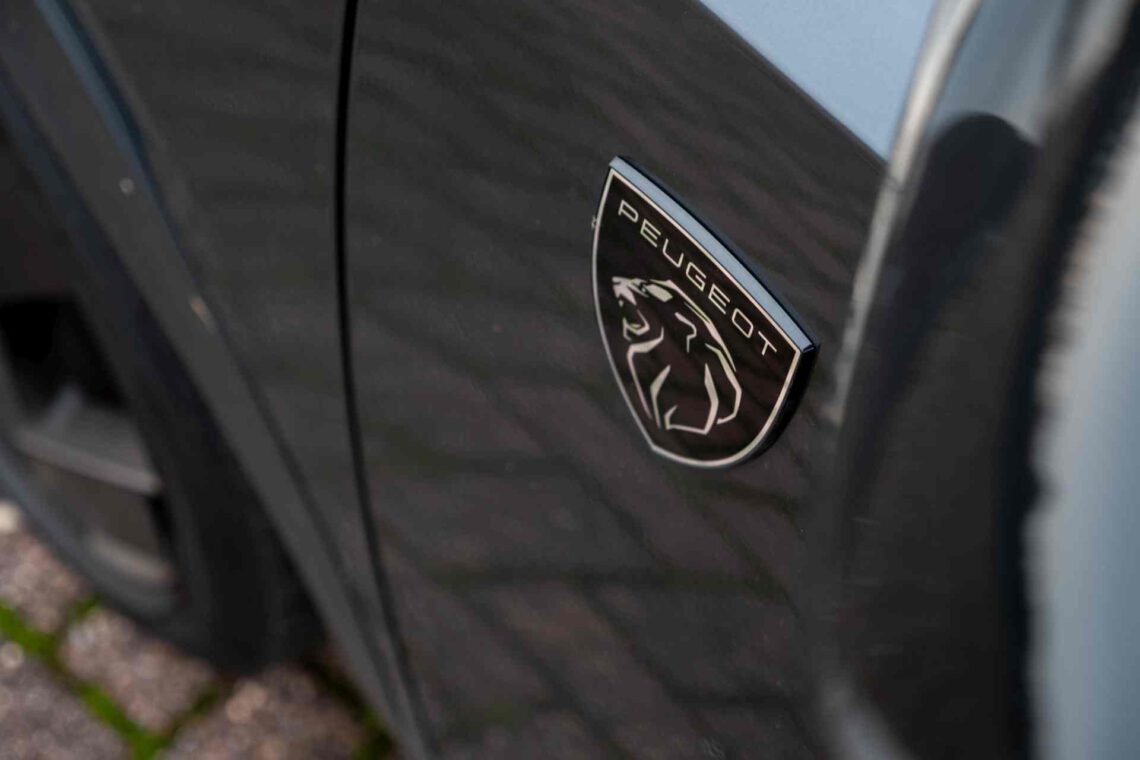
Electric Peugeot 408: the e-408
Those who prefer all-electric driving will have to wait until summer. Then the e-408 is expected to come to our country. It gets the new Stellantis electric powertrain, which we already know from the Peugeot e-308 and Opel Astra Electric. It consists of a 54 kWh battery, which provides about 400 electric miles. Although at 156 hp it has less power than the PHEV, we know from experience that the powertrain is snappy enough. Check out our test with the e-308 here:

